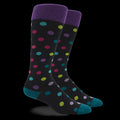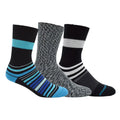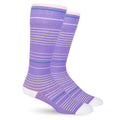What Cereal Can Diabetics Eat?
Posted by SIMON LIM

If you have diabetes, breakfast can be a challenging meal to plan. What cereal can diabetics eat to give you the energy you need to start your day without raising your blood sugar levels?
There are many different types of cereal diabetics can enjoy for breakfast. This blog post will explore how to choose the right breakfast cereal that is both tasty and healthy!
Choosing the Right Cereal
When it comes to cereal, there are a lot of options. However, not all cereals are created equal. Choosing the right cereal is essential if you're looking for a nutritious breakfast.
Avoid cereals that are made mostly of refined grains and added sugars. These cereals may be high in calories, but they're not much else. They can also cause your blood sugar to spike quickly.
On the other hand, whole-grain cereals are a great option. They are made of grain kernels that are packed with fiber.
Fiber is essential for keeping your blood sugar levels in check and reducing your risk of heart disease. Whole grains are also a good source of vitamins and minerals and are low in calories. The most common whole grains in breakfast cereals include the following:
- oatmeal
- whole wheat flour
- wheat bran
- whole cornmeal
- barley
- brown rice
- wild rice
- buckwheat
When shopping for cereal, pay close attention to labels and choose wisely. It's crucial to look for cereals where the first ingredient is a whole grain. A healthy, easy-to-make breakfast can be as simple as a bowl of cereal - if you choose the right one.
Keep An Eye on the Hidden Ingredients
When grocery shopping, it's essential to be aware of the ingredients in the food you're buying. Sometimes, hidden ingredients may not appear obvious at first glance. For example, many cereals are high in sugar.
The American Diabetes Association recommends looking for cereals with at least 3 grams of fiber and less than 6 grams of sugar. But, sugar can be listed under different ingredient labels. It's crucial to be vigilant and check the labels carefully. Healthline lists the 56 other names of sugars that may be hidden in the nutrition list of products that we buy.
Additionally, you should also watch out for foods that are high in sodium. The Mayo Clinic recommends limiting your sodium intake to 2,300 mg per day. By being aware of the ingredients in the food you're buying, you can make healthier choices for yourself and your family.

Adding Protein to Your Cereal
Cereals can be made even healthier and more filling by adding a source of protein. Nuts are a great addition to your breakfast cereal. Not only do they provide a source of protein, but they also add flavor and texture.
When choosing nuts for your cereal, try to select an unsalted option. These types of nuts will provide the most health benefits. Additionally, eat them in moderation, as they are relatively high in calories.
To complete your breakfast, add unsweetened Greek yogurt or eggs. You can also add other foods high in protein, such as milk or cheese. These additional protein sources will help keep hunger at bay. It will also help you power up through your morning routine, feeling satisfied.
Topping Your Cereal with Dairy or Dairy Substitute
If you have diabetes, it's essential to watch your carbohydrate intake. One way to do this is by paying attention to the milk you add to your cereal. Whole milk contains carbohydrates, as well as saturated fat. While 1-2 percent skim milk has lower carbs and saturated fat levels.
If you're looking for an alternative to dairy milk, soy and almond milk are two great options. But note that soy milk has a similar carb content to cow's milk. On the other hand, unsweetened almond milk is lower in calories and carbs. When choosing milk for your cereal, select one that fits your diabetic meal plan.
How Much Cereal Should a Diabetic Eat?
A bowl of cereal is a go-to breakfast for many people. If you have diabetes, it's essential to choose the right kind and limit the amount you eat. When portioning out your cereal, use a measuring cup to ensure you're not overeating.
With portion size, it's best to err on caution. Start with a small portion and see how your blood sugar responds. If your blood sugar doesn't rise too much, you can gradually increase the portion size until you find a balance that works for you.

Takeaways
When it comes to breakfast cereal, there are endless options to choose from. But if you have diabetes, it's crucial to select a cereal that will help keep your blood sugar levels in check.
So, what cereal can diabetics eat? Look for whole-grain cereals high in fiber and low in sugar. And remember to read the label carefully to ensure the cereal doesn't contain too many unhealthy ingredients.
SHARE:




































